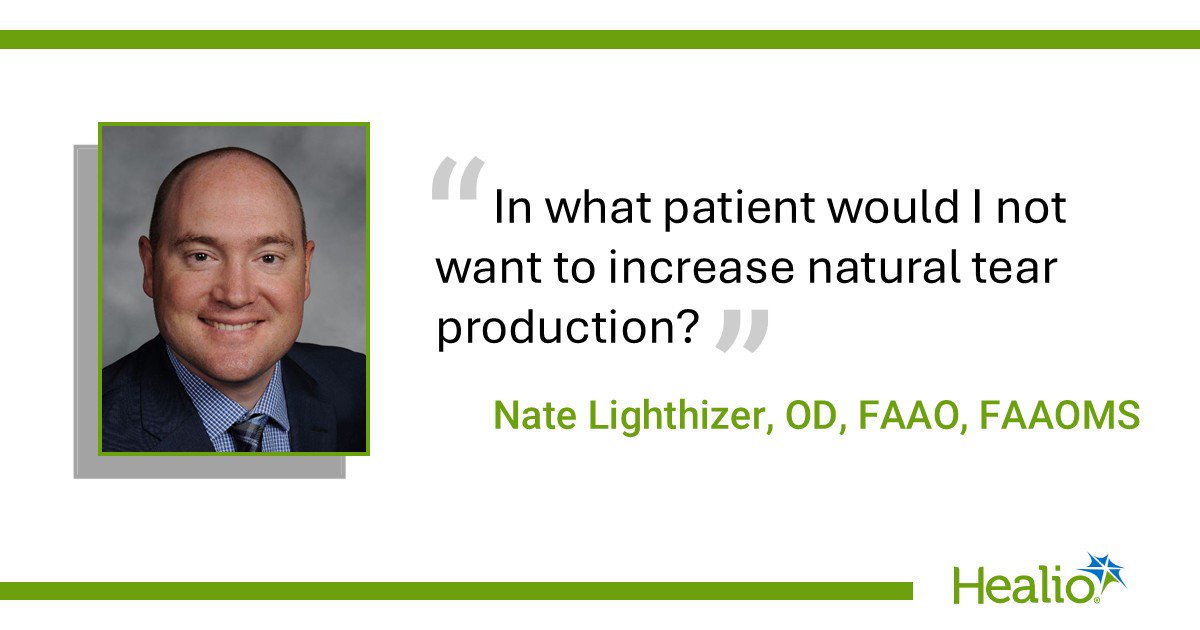August 19, 2025
5 min read
Key takeaways:
- HEDIS is a health care performance measurement tool.
- A new measure incentivizes follow-up care after ED and urgent care.
- The asthma medication ratio was retired due to guidelines for combined therapy.
The National Committee for Quality Assurance has added a measure for follow-ups after acute and urgent care visits for asthma.
The organization also retired its Asthma Medication Ratio measure in its Healthcare Effectiveness Data and Information Set (HEDIS) Measurement Year 2026 publication.

To find out how these changes will impact clinical care and outcomes, we spoke with Danielle Rainis, MPH, senior research associate, and Jenna MacPherson, MA, assistant vice president of strategic communications, both at National Committee for Quality Assurance (NCQA).
Healio: What is NCQA, and how is it involved with health care?
MacPherson: This is our 35th year. We were founded in 1990 by Margaret O’Kane.
We’re an independent nonprofit. We drive health care quality through things like standards, accreditation and performance measurement. We also offer support, and we work through some state and federal agencies to ensure that different health systems and health plans are meeting certain needs of their populations. We basically enable health care organizations to make more informed decisions about how they can deliver care, where the gaps are that they need to fill, and how they need to build processes to be more effective for their patients and their members. Really, at the end of the day, the goal is to just deliver better outcomes for those patients.
Healio: How does HEDIS Year 2026 fit into this?

Jenna MacPherson
MacPherson: HEDIS is one of the most widely used performance measurement tools in U.S. health care. A lot of health care organizations, but primarily health plans, are reporting HEDIS for a number of reasons, including to satisfy requirements of the states where they operate, meet performance standards for the Centers for Medicare and Medicaid Services (CMS), and to show consumers and employers how they’re performing and keeping their members healthy.
All our measures are evidence-based. When we put together new measures, it’s a reflection of the needs of the population in the U.S. It really covers so many different domains, from pediatric care to geriatric care, from preventive to chronic disease management, to help ensure that patient outcomes are the best that they can be, or if they’re not, where organizations can do better.
Rainis: We update HEDIS annually. On Aug. 1, we released the volume for Measurement Year 2026. A lot of things go into the decision about what measures go into HEDIS. We’re obviously very intentional about it. We routinely make updates to measures to make sure they’re still clinically relevant. We have a whole process that is very detailed and rigorous. There are a lot of steps along the way that we take.
We seek input from convening experts. We also leverage things like public comments. All throughout the way, we have a lot of mechanisms in place to make sure that what we’re doing is going to be clinically relevant and feasible when we’re talking about accountability for health plans.
Healio: Why did you look at asthma this year?
Rainis: We periodically re-evaluate our measure portfolio to determine any gaps in care, and we had noticed based on our research and our review of asthma guidelines, in addition to conversations with experts in the field, that there was a measurement gap in asthma care coordination.
Healio: Why did NCQA add the measure for follow-up after acute and urgent care visits for asthma?
Rainis: Patients should be utilizing primary care for prevention of asthma exacerbations instead of acute care. That’s always the ideal — prevention instead of immediate emergency relief of symptoms. But flareups happen. Exacerbations happen. And the guidelines really highlight the importance of patients following up with their providers after a visit to any acute setting for an exacerbation or flareup.
Particularly since urgent care centers are key settings in which patients seek acute care, we wanted to make sure that those events were captured in the measure so that regardless of where a patient seeks care, they should have a touch point with their primary care provider to really ensure that they’re on the appropriate treatment. Our hope with this measure, since it is a health plan-level measure, is that health plans will devote the resources necessary to support their providers in helping their patients be healthy. That’s key when we’re talking about downstream impact.
Healio: Why did NCQA retire the measure for asthma medication ratio?
Rainis: The asthma medication ratio measure looked at the ratio of units of controller medication to all asthma medications — controller and reliever. Basically, it would look at, for every individual person, the dispensing events that they had throughout the year. Did they have essentially more controllers than relievers? It is a way to assess, because you want the patient to be using more controller medications than short-term relievers. That’s essentially what that measure was doing, and when it first came out, it made sense. It had been in HEDIS for quite a long time.
But as part of our evaluation of the most recent guidelines and discussions with our asthma experts, we found that the measure was really not aligned with current recommendations, which are that most patients with asthma should actually use a combined inhaler that has both a controller and reliever medication. The calculation of a ratio where you compare units of controller and reliever medications was no longer relevant based on those guidelines. That’s really the main reason we decided to retire that measure.
We do that periodically. Measures are not in HEDIS forever. Part of the reevaluation process is we assess whether a measure is still relevant. After discussions with the experts and looking at the guidelines, it made sense to move on from this one.
Healio: How will these changes impact how PCPs and specialists treat asthma?
Rainis: I don’t think they need to do anything differently if they provide the appropriate care. But health plans can make sure that patients are following up with their providers. I would hope that would strengthen the relationship between the provider and the patient and make sure they’re having those conversations about improving their asthma outcomes. It’s important to make sure there’s an asthma treatment plan in place. There are so many triggers for it.
We hope that health plans will really devote the resources necessary to support their network providers in their goal, which is always to help their patients be healthier and feel better. We’re hoping that this is really a good accountability mechanism that drives individuals toward non-acute care and improves disparate asthma outcomes. We really hope this new measure is a lever that can move the needle on asthma care.
Healio: Do you have anything else to add?
MacPherson: We’ve been doing a lot of work on asthma for the last year or so. We put out a white paper last year looking at asthma more holistically and asking why it isn’t treated like some other chronic diseases in terms of management and mitigation.
These measures are the culmination of a lot of that thinking, and it’s just a drop in the bucket to a much larger ecosystem of things and conversations that are happening around asthma and how we think about it.
Rainis: This is just one part of the picture. It’s a start. But we obviously will continue to focus on asthma and respiratory health.
Reference:
For more information:
Danielle Rainis, MPH, and Jenna MacPherson, MA, can both be reached at allergy@healio.com.









